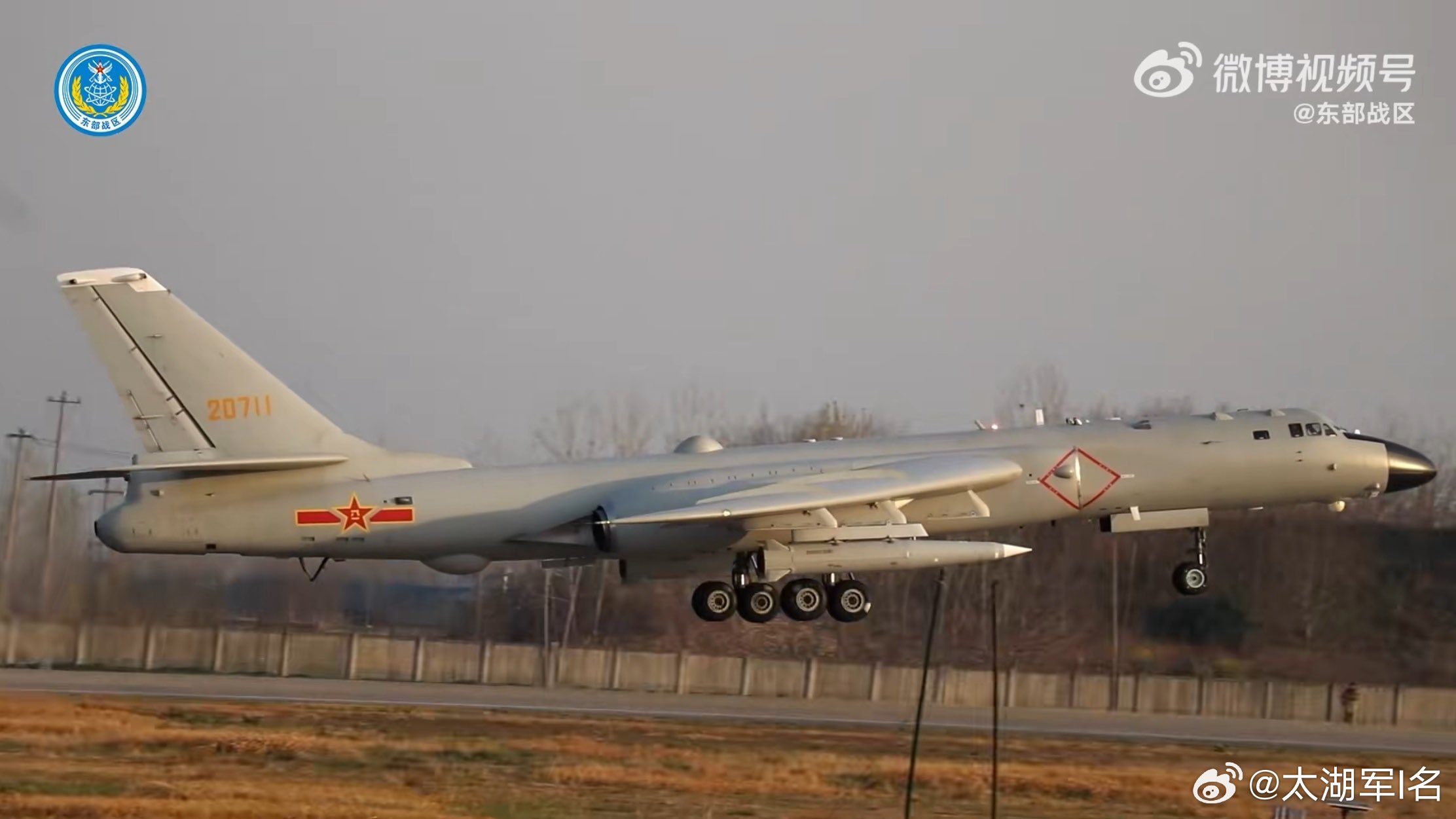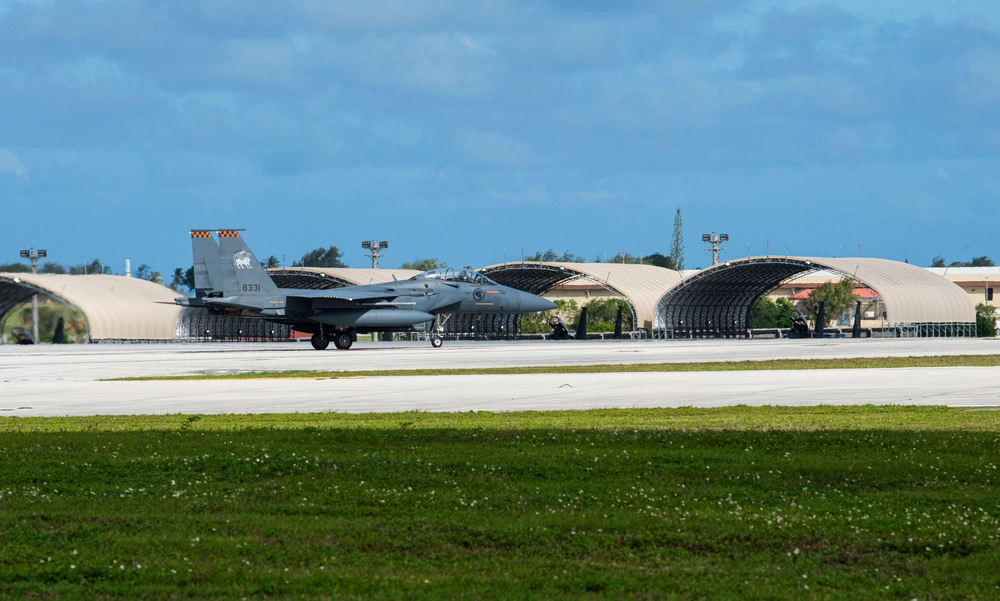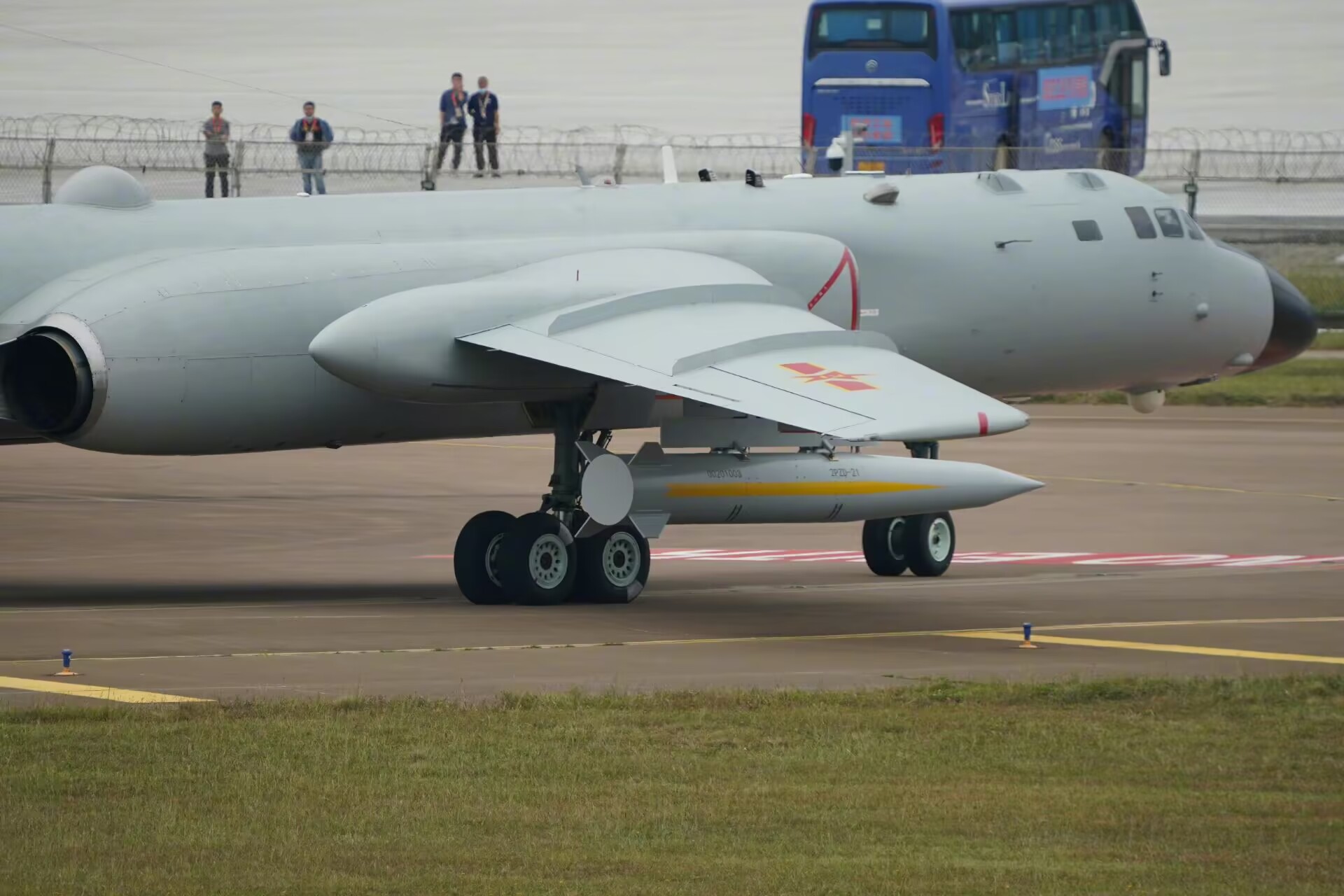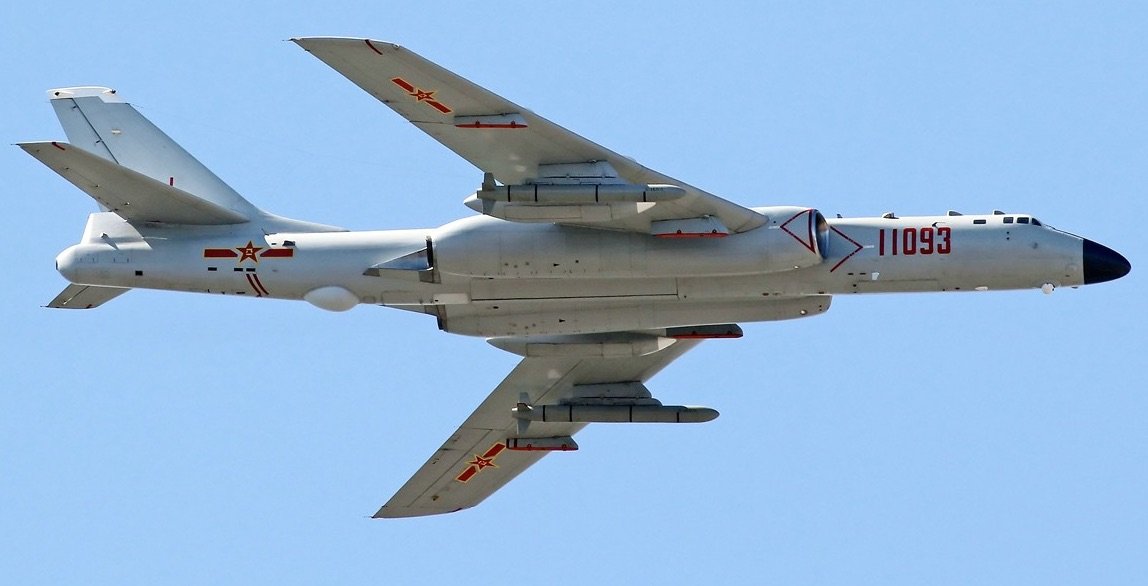China’s H-6K Bomber Unleashes KD-21 ‘Carrier Killer’ Missile, Escalating Threat to U.S. and Allied Forces in Indo-Pacific
Satellite imagery and ground photos recently revealed an H-6K bomber assigned to the elite 10th Bomber Division carrying two KD-21 ALBMs under its wings, a clear signal that this formidable weapon has reached operational status and is now being positioned closer to potential flashpoints.
(DEFENCE SECURITY ASIA) — For the first time, China’s People’s Liberation Army Air Force (PLAAF) has deployed its H-6K long-range bomber armed with the air-launched ballistic missile (ALBM) KD-21 during a live military drill, underscoring a dramatic elevation in Beijing’s strategic threat calculus aimed at U.S. and allied forces in the Indo-Pacific theatre.
Satellite imagery and ground photos recently revealed an H-6K bomber assigned to the elite 10th Bomber Division carrying two KD-21 ALBMs under its wings, a clear signal that this formidable weapon has reached operational status and is now being positioned closer to potential flashpoints.
Though the H-6K can reportedly carry up to four KD-21 missiles, the appearance of even two on a single sortie marks a watershed moment, as it indicates China’s readiness to field this system in frontline conditions since its public unveiling at the Zhuhai Air Show in 2022.
This move illustrates Beijing’s accelerated progress in long-range precision-strike capabilities, particularly in its ability to project power deep into contested maritime zones.
With an estimated length of 7 meters, a diameter of 0.76 meters, and a launch weight of around 2 tonnes, the KD-21 is believed to house a deep-penetration warhead designed to defeat reinforced underground bunkers and command centers, both at sea and on land.
Powered by a solid-fuel rocket motor, the missile boasts an operational range of over 1,000 kilometers, effectively pushing China’s strategic reach beyond the first island chain and into U.S. military strongholds like Guam.
Its guidance system is thought to incorporate an active radar seeker paired with synthetic aperture radar (SAR) technology, granting the KD-21 a high degree of accuracy in striking both moving naval targets and fixed ground installations.

The operational pairing of the H-6K bomber and the KD-21 ALBM represents a fusion of Soviet-era strategic aviation design and modern Chinese missile innovation, marrying legacy endurance with cutting-edge lethality.
Prior to this exercise, there had been no known instances of H-6K bombers being equipped with the KD-21 for either training or deployment, making this development all the more significant for regional military planners.
Nicknamed the “carrier killer,” the KD-21 introduces a potent new layer of risk to U.S., Japanese, and allied maritime forces operating in the South China Sea, East China Sea, and beyond.
Its designation as an anti-ship ballistic missile (ASBM) suggests a clear intent to challenge U.S. naval dominance, particularly the strategic mobility and deterrent power of aircraft carrier strike groups operating across the Pacific Rim.
What sets the KD-21 apart is its dual-capability design, enabling it not only to strike maritime targets with devastating impact but also to engage high-value land targets with precision, further complicating the strategic posture of U.S. forces in the region.
This flexibility poses a direct threat to American fixed military infrastructure across the Indo-Pacific, including strategic hubs such as Andersen Air Force Base in Guam and forward-deployed facilities in Japan, the Philippines, and the Marianas.

The KD-21 is believed to be part of a broader family of ALBMs under development by the People’s Liberation Army, each optimized to serve different mission sets within China’s increasingly sophisticated anti-access/area-denial (A2/AD) architecture.
Military analysts suggest that China’s diversification of ALBM platforms is designed to saturate and overwhelm missile defense networks while simultaneously denying adversaries freedom of maneuver in contested regions.
Whether intended primarily for land attack, maritime strike, or both, the operational debut of the KD-21 signals a major leap forward in China’s strategic airpower portfolio, with far-reaching implications for regional security balances.
Air-launched ballistic missiles like the KD-21 are exceptionally difficult to intercept due to their high terminal velocities, unpredictable flight paths, and steep attack angles.
These missiles often travel at hypersonic or near-hypersonic speeds during their final approach, arriving at steep trajectories that challenge even the most advanced missile defense systems like THAAD or Aegis.
Compounding the difficulty of interception is the KD-21’s reported ability to perform evasive maneuvers during the terminal phase, further increasing its survivability against kinetic interceptors.


From a military strategy perspective, China’s ability to launch ALBMs from airborne platforms means these missiles can be deployed rapidly, en masse, and from unexpected vectors—thereby complicating the enemy’s threat detection and response cycle.
Chinese doctrine increasingly envisions integrated strike packages, combining ALBMs like the KD-21 with cruise missiles, decoys, and suicide drones to saturate and overwhelm opposing defenses through multi-domain coordinated assaults.
Although China already commands the world’s largest inventory of ground-launched ballistic missiles, the airborne launch capability afforded by the H-6K significantly enhances Beijing’s ability to project power far from its shores in a flexible and unpredictable manner.
This evolution extends the PLAAF’s strike reach into areas previously thought to be out of range, thus nullifying traditional buffer zones that once protected American assets and regional allies.
The H-6K bomber now carrying the KD-21 belongs to the PLAAF’s 10th Bomber Division, one of the oldest and most distinguished formations in China’s military aviation history.
Formed on January 17, 1951, and originally composed of the 28th, 29th, and 30th Bomber Regiments, the division has earned accolades such as “Model Bomber Group” and “Red Banner Division” for its service in numerous high-stakes operations.


Today, it operates under the Eastern Theater Command Air Force, responsible for missions over the East China Sea and the increasingly volatile Taiwan Strait.
Its primary base is located at Anqing Air Base in Anhui Province, with additional operations supported from Luhe Air Base in Jiangsu Province, placing it in close proximity to regional flashpoints.
The pairing of the H-6K with the KD-21 thus represents a clear evolution of China’s strategic bomber force—from a symbol of Cold War deterrence to a modern precision-strike platform capable of shaping the Indo-Pacific battlespace in Beijing’s favor.
As tensions escalate over Taiwan, the South China Sea, and freedom of navigation operations, the H-6K/KD-21 combination could shift the strategic equilibrium by threatening U.S. power projection and naval supremacy across the region.
By fielding a missile that can penetrate hardened facilities and evade advanced missile defenses, China is signaling that it possesses the tools to deter, delay, or defeat intervention by superior naval forces in any future contingency.
Ultimately, the H-6K and KD-21 pairing marks not only a technological leap but a geopolitical statement—one that underscores Beijing’s growing willingness to wield long-range precision strike capabilities as a central pillar of its strategic deterrent.
— DEFENCE SECURITY ASIA


